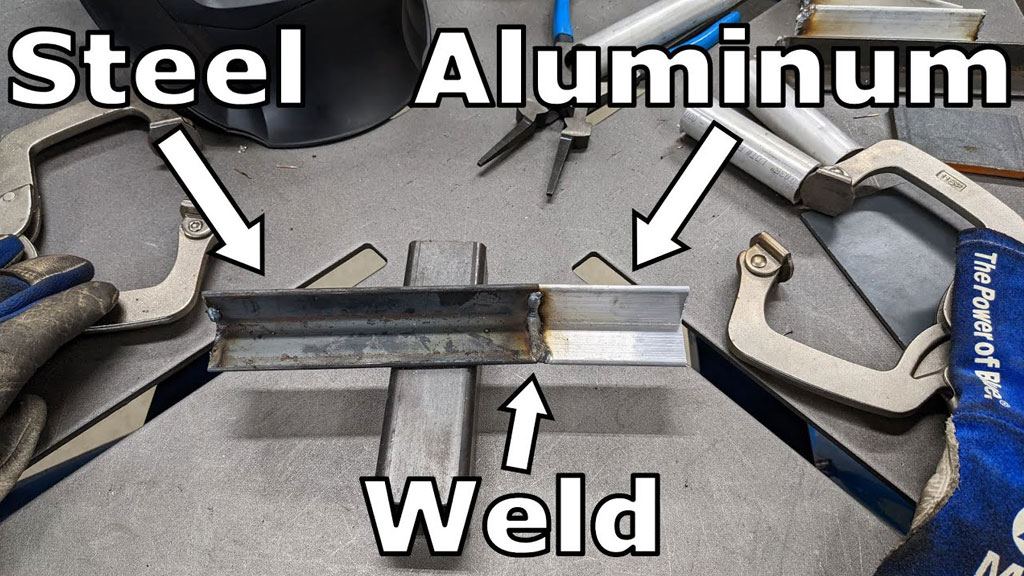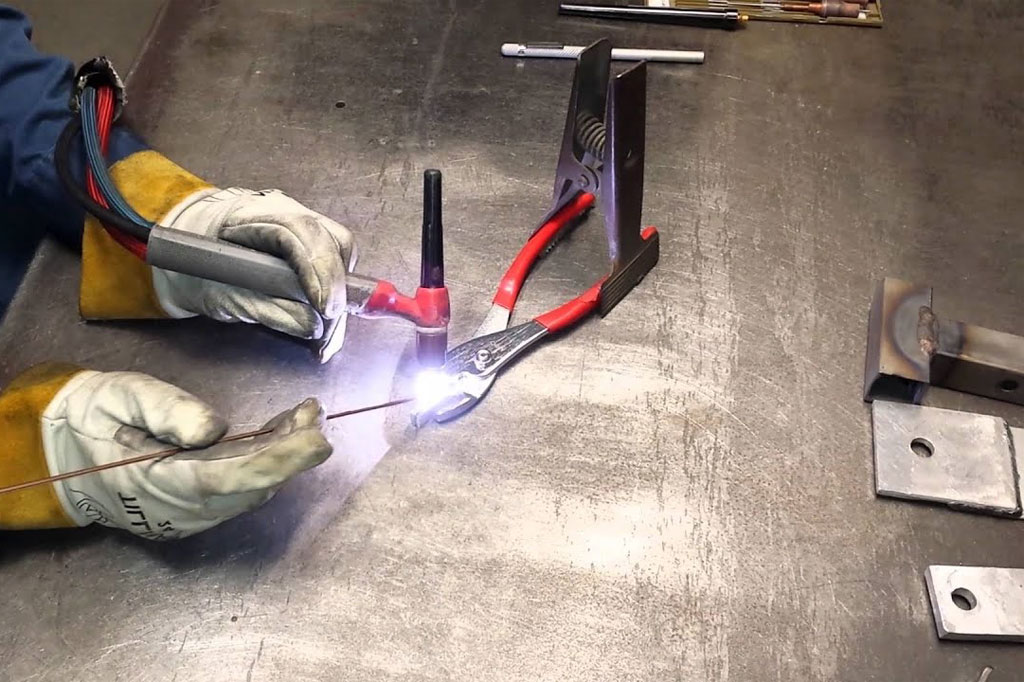Metal welding is a crucial process used to join metal pieces together by applying heat and sometimes pressure to create a strong bond. It plays an essential role in many industries.
There are various techniques and considerations when welding different metals together, each with unique properties.
Below, we’ll cover the most common metal combinations and techniques involved in welding them.
1. Welding Aluminum to Aluminum
Aluminum is a lightweight, corrosion-resistant material widely utilized in sectors like aerospace, automotive, and construction. To weld aluminum effectively, a few key considerations are essential:
- Preparation: Aluminum is sensitive to contamination, especially from oil, grease, and oxidation. Proper cleaning of the welding area is critical.
- Welding Process: TIG (Tungsten Inert Gas) welding is preferred for its precision and clean welds, while MIG (Metal Inert Gas) welding is better suited for thicker aluminum components.
- Filler Material: A 4043 or 5356 filler rod is typically used, depending on the strength and corrosion resistance required.
2. Welding Stainless Steel to Steel
Stainless steel and mild steel differ in their composition and melting points, so welding them requires careful attention to the process:
- Welding Process: The best method for welding stainless steel to steel is typically TIG or MIG welding. TIG welding is ideal for thinner materials, while MIG is better for thicker steel.
- Filler Material: For welding stainless steel to carbon steel, a filler material like ER309L or ER308L is often recommended because these materials offer good corrosion resistance and strength.
- Considerations: The difference in melting points between stainless steel (higher) and mild steel means heat management is essential to avoid warping or excessive burn-through.
3. Welding Brass to Brass
Brass is an alloy of copper and zinc, and welding it can be tricky due to its tendency to burn and oxidize:
- Welding Process: TIG welding is the preferred method for brass, as it provides more control over the heat input, which is crucial to avoid warping and oxidation.
- Filler Material: Brass filler rods, typically made of a copper-zinc alloy, are used to maintain the alloy’s properties and prevent the weld from being too brittle.
- Considerations: Preheating brass before welding minimizes the risk of cracking or warping.
4. Welding Aluminum to Steel

Welding dissimilar metals, such as aluminum and steel, presents significant challenges due to their differing properties:
- Welding Process: The preferred method for welding aluminum to steel is using a bimetallic transition insert, often made from a copper-based alloy. This insert is placed between aluminum and steel to ensure a strong bond and prevent issues like galvanic corrosion.
- Filler Material: A combination of a steel filler rod for the steel part and an aluminum filler for the aluminum can also be used, though it requires special care to avoid joint weakness.
- Considerations: The welding process for aluminum to steel is typically complex and requires skilled welders. Additionally, the heat input must be carefully controlled to avoid deforming either material.
5. Welding Stainless Steel to Mild Steel
Welding stainless steel to mild steel is commonly needed in industries where the two materials are used in tandem, such as in food processing or chemical processing systems:
- Welding Process: TIG welding or MIG welding can be used for this application. TIG welding provides superior control, whereas MIG welding is more efficient for thicker materials.
- Filler Material: A filler rod-like ER309L is used for stainless to mild steel welds to provide a good balance between corrosion resistance and strength.
- Considerations: Heat management is important to prevent distortion or cracking, as the materials have different expansion rates.
6. Welding Carbon Steel to Stainless Steel
Welding carbon steel to stainless steel presents challenges due to their differing physical properties, including variations in thermal expansion and strength.
- Welding Process: TIG and MIG welding are suitable for welding carbon steel to stainless steel. TIG is typically used for precise welds, while MIG is often used for thicker materials.
- Filler Material: ER309L or ER309 is the standard filler material for this weld type. It creates a stronger joint that can resist corrosion, ensuring that the weld can handle the stresses typically associated with the materials.
- Considerations: The use of proper filler material is essential to avoid weld cracks, as carbon steel and stainless steel have different chemical compositions that can lead to brittle welds without the right alloy.
7. Welding Cast Iron to Steel
Cast iron and steel are difficult to weld together because cast iron is brittle and tends to crack when exposed to high temperatures:
- Welding Process: Preheating is essential when welding cast iron to steel, as it reduces thermal shock and lowers the likelihood of cracking.
- Filler Material: Nickel-based rods, like those used in NiFe or NiCu alloys, are typically used for welding cast iron to steel, as they offer better bonding strength and flexibility.
- Considerations: Slow cooling of the weld is necessary to prevent the formation of cracks in the cast iron. It’s also recommended to use a low heat input to avoid stressing the brittle cast iron.
8. Welding Copper to Stainless Steel
Copper and stainless steel have very different melting points and expansion rates, which can make welding them together difficult:
- Welding Process: TIG welding is preferred for this combination as it provides greater control over the heat input. Some may also use brazing or soldering, especially for thinner copper components.
- Filler Material: A filler rod composed of a copper-silver alloy is commonly used for copper to stainless steel welding, offering a good combination of strength and conductivity.
- Considerations: Copper’s high thermal conductivity and low melting point can create difficulties in controlling the heat input, making it crucial to carefully manage the weld pool to avoid defects.

